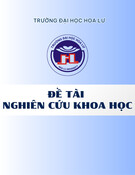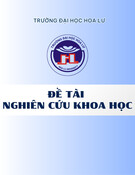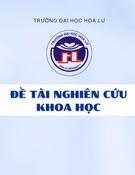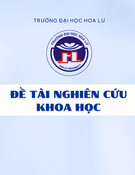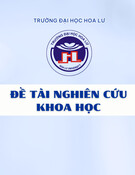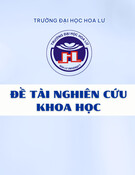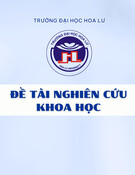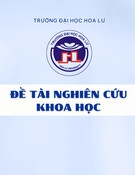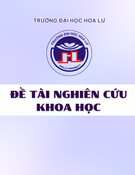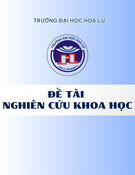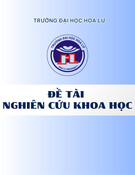
Original article
Effects of water supply on gas exchange
in Pinus pinaster Ait. provenances
during their first growing season
Manuel Fernández, Luís Gil and José A. Pardos*
Unidad de Anatomía, Fisiología y Genética Forestal, ETS de Ingenieros de Montes, Ciudad Universitaria s/n,
Universidad Politécnica de Madrid, 28040, Madrid, Spain
(Received 26 March 1999; accepted 16 July 1999)
Abstract – Gas exchange parameters were monitored during the first growing season on Pinus pinaster young seedlings belonging to
six provenances and submitted to two water supply regimes in the open air under cover. Significant differences were found between
water supply regimes and measurement dates; sometimes also between provenances. Gas exchange rate responses to needle water
potential were similar for all the provenances, and rate changes were only detected as water potential went down to less than
–1.3 MPa. The Iberian provenances, in contrast to the Landes, showed a tendency to save water at the end of Spring, which indicates
an adaptation to locations with Summer drought. The growth differences between provenances were not expressed in terms of differ-
ences in the instantaneous net photosynthetic rate, since this will depend on other factors, such as seedling water status and the time
that the measurement was made. However, provenance growth differences may be partially explained by the differences in water use
efficiency and nitrogen productivity.
maritime pine / early selection / gas exchange parameters
Résumé – Effets de l’alimentation en eau sur les échanges gazeux des provenances de Pinus pinaster Ait. au cours de leur pre-
mière saison de végétation. Les échanges gazeux ont été étudiés au cours de la première saison de végétation de jeunes semis de
Pinus pinaster appartenant à six provenances et soumis à deux régimes d'alimentation en eau sous couvert en plein air. Des dif-
férences significatives ont été trouvées entre les régimes d'alimentation en eau et les dates de mesures, parfois aussi entre les prove-
nances. Les réponses des taux d'échanges gazeux au potentiel hydrique des aiguilles étaient similaires entre toutes les provenances, et
les changements de taux ne furent seulement détectés que lorsque le potentiel hydrique devint inférieur à –1,3 MPa. Les provenances
ibériques, contrairement à celles des Landes, montrèrent une tendance à économiser l'eau à la fin du printemps, ce qui indique une
adaptation à la situation de sécheresse estivale. Les différences de croissance entre provenances ne se sont pas exprimées en terme de
différences de taux nets instantanés de photosynthèse, car cela dépend aussi d'autres facteurs comme le statut hydrique des semis et
de l'époque où les mesures ont été effectuées. Cependant, les différences d'accroissements entre provenances peuvent être partielle-
ment expliquées par des différences dans l'efficience d'utilisation de l'eau et de l'azote.
pin maritime / sélection précoce / échanges gazeux
1. INTRODUCTION
The tendencies in the variation of ecophysiological
parameters (gas exchange, water relations and some
others) can be useful in explaining plant growth
responses in different water availability situations [39,
52, 53, 60]. Forest tree species show differences in
stomatal and photosynthetic responses to water stress, a
Ann. For. Sci. 57 (2000) 9–16 9
© INRA, EDP Sciences 2000
* Correspondence and reprints
Tel. 34 91 3367113; Fax. 34 91 5439557; e-mail: jpardos@montes.upm.es

M. Fernández et al.
10
fact which has sometimes been linked to drought toler-
ance and preferences for a particular habitat [4, 37, 51],
as well as to differences within the same species [13].
Although sometimes these differences are only
expressed within a given rank of plant water potential [3,
9]. Significant differences between provenances were
found concerning physiological adaptations to water
stress in maritime pine young seedlings [16, 27, 41, 42,
43, 50]. So, the need for a deeper basic knowledge on
water stress adaptation of Pinus pinaster [36]in those
situations is strengthened by its applicability to selection
programmes. In this sense, photosynthesis measurements
at early age were proposed as growth predictors for for-
est tree species [34]. However, experimental work has
proved that results are satisfactory in some cases [26]but
not always [29, 32, 40, 51]. Thus, other factors such as
respiration [24]or, even, needle morphology [10], for
instance, would have to be taken into account. In any
case, since plant biomass comes from the CO2fixation, it
is not surprising that this would be the first candidate for
evaluation and early selection [19].
Water stress reduces photosynthesis due to its efect on
stomatal aperture and chloroplast dehydration [7, 23,
44]. Therefore, under water shortage, transpiration rate
(E) or the ratio photosynthetic rate to transpiration rate
(instantaneous water use efficiency, A/E) are important
factors to consider. The ratio A/Ehas been used as a dis-
tinguishing criterion for drought tolerance, both between
species [6, 21]and intraspecifically [39, 49, 56].
Nevertheless A/Edoes not give an integrated value
through time and some contradictory results have been
found [30], since A/Ebased selection depends on compe-
tence and intensity and duration of water stress period [8,
11, 45]. Moreover, it can be presumed that water use
efficiency increases in response to leaf nitrogen content
by the increase of mesophyl conductance, without stom-
atal conductance increase. This is the case sometimes
[15, 25], but not always [38]; even the response can
depend on water availability conditions [17].
In the present paper responses to water stress of some
ecologically distant Pinus pinaster provenances are ana-
lyzed in terms of gas exchange parameters. Seedlings
were subjected to two water supply regimes in the nurs-
ery, under cover, in order to establish criteria for early
selection and suitability for afforestation on drought-
prone sites.
2. MATERIAL AND METHODS
In April 1994, seeds from five Iberian provenances
(Oria -Or-, Arenas de San Pedro -Ar-, Oña -Oñ-, San
Leonardo de Yagüe -SL-, y Boniches -Bo-) and two
open pollinated families of Landes (France) provenance
(table I) were collected and germinated. After germina-
tion, seedlings were taken to open air under a translucid
cover and sown in containers filled with 230 ml of a
sand:black peat mixture (2:1 v/v). Air temperatures were
recorded [16]. Seedlings were carefully watered twice a
week for two months. After that, two water supply
regimes were applied: once a week (R1) and every two
weeks (R2), both up to field capacity. The experimental
design consisted of twelve completely randomized
blocks with fifteen plants per block, provenance and
water supply regime, altogether 2160 seedlings.
Gas exchange and needle water potential (Ψn) were
measured five times during the growing season (the sec-
ond week in June, third week in July, second week in
September, October and November) on 5–6 seedlings
per provenance and water supply just before watering,
between 12:00 and 14:00 h. Predawn water potential
(Ψp) was recorded as well. Measurements were done in
two consecutive days, selecting randomly half of the
seedlings each day. On these 5-6 seedlings and another
five, needles, stem and root dry weight were measured
after 48 hours at 70 ºC, and nitrogen content was also
analyzed by the Kjeldahl semi-micro system (Kjeltec
System 1026, Tecator. Höganäs, Sweden). Projected
Table I. Ecological characteristics of Pinus pinaster provenance regions. T= annual mean temperature; P= annual mean precipita-
tion; Phytoclimate regions [1].
Altitude TPLatitude Longitude Phytoclimate regions
(m) (ºC) (mm)
Or 1150 15.8 357 37º30'N 2º20'W IV1
Ar 750 13.4 1190 40º07'N 4º17'W VI(IV)2/ IV4
Oñ 700 10.8 685 42º43'N 3º24'W VI(IV)1
/ VI(IV)2
SL 1200 8.7 641 41º43'N 2º27'W VI(IV)1/ VI(IV)2
Bo 1120 10.8 663 39º59'N 1º27'W VI(IV)1 / VI(IV)2
Ld 40 12.0 833 44º00'N 1º00'W VI(V)

Gas exchange of maritime pine young seedlings 11
needle area (PNA) was also measured with a leaf area
meter (Delta T Devices, Cambridge, England). Net pho-
tosynthetic rate (A), net transpiration rate (E), stomatal
conductance to water vapour (gwv) and intercellular to air
CO2ratio (Ci/Ca) were measured with a portable infra-
red gas analyser (LCA-4, ADC. Hoddesdon, England).
Calculus of parameters was made according to Von
Caemmerer and Farquhar (1981) and expressed on a pro-
jected needle area basis. Water potentials (Ψp, Ψn) were
measured with a pressure chamber (PMS Instruments
Co. Corvallis, OR, USA).
Variance analysis using a BMDP2V statistic package
(BMDP Statistical Software Inc. Cork, Ireland) was
applied to the data in order to discriminate between
provenances, watering treatments and measurement
dates. The block effect was not statistically significant
for any parameter, so it was excluded from the statistical
analysis. The Tukey HSD (Honest Significant
Difference) for means comparison was applied whenever
differences were significant (P< 0.05). It was checked in
advance that all the parameters comply with normal dis-
tribution and variance equality. No data transformation
was carried out.
3. RESULTS
Tables II and III show mean values and significance
levels of gas exchange parameters. Table IV shows the
values of dry weight and projected needle area. Total,
shoot and root dry weight were positively correlated
(r2> 0.90, p< 0.01). Shoot/root ratio did not show sig-
nificant differences between provenances (p> 0.23), its
mean values were 1.95 ± 0.05 in the R1 treatment and
2.24 ± 0.06 in the R2 at the end of the experiment.
No significant differences in net photosynthetic rate
(p= 0.097) were found between provenances as a whole.
However, for R1 water supply regime in the October
measurement, Oria provenance showed a rate (17.2 ±
1.2 µmol CO2m–2 s–1) significantly higher (40% to
100%) than the other provenances. A similar behaviour
was found for stomatal conductance (gwv).
The provenance factor resulted significant for transpi-
ration. It was only due to the values obtained for the R1
treatment in June, as the transpiration rate of Boniches
provenance (3.6 ± 0.3 mmol H2O m–2 s–1) was signifi-
cantly different from Oria, Arenas and the Landes,
whose rates were respectively 2.0, 2.0 and 1.9 mmol
H2O m–2 s–1. In July these values decreased up to 80%
for all the Iberian provenances. In contrast to them, for
the Landes families, these parameters showed an
increase of up to 9%, from June to July. In September,
photosynthetic rate and stomatal conductance were sig-
nificantly different in Or, Ar and Ld provenances (5.8 to
6.6 µmol CO2m–2 s–1 and 74 to 96 mmol H2O m–2 s–1,
respectively) than in Oñ, SL and Bo (5.0–5.4 and 53–61,
respectively), however there were no significant differ-
ences between provenances in the transpiration rate. On
the other hand, for R1 treatment in June, Or, Ar and Ld
provenances tended to be more efficient in water use
than Oñ, SL and Bo, since they showed similar photo-
synthetic rates but up to 30 to 40% lower transpiration
and stomatal conductance values.
Water potential was not significantly different among
provenances. For the R1 treatment, predawn water
potential averaged –0.49 to –0.62 MPa, and midday
water potential (Ψn) –0.89 to –1.05 MPa. For the R2
treatment, predawn water potential dropped up to
–2.5 MPa for the provenances as a whole in July. The
relationship between gas exchange parameters and water
potential is showed in figure 1.
Table V shows foliar nitrogen concentration
(%Nneedles) and photosynthetic nitrogen use efficiency
(ANneedles, µmol CO2molN–1 s–1), as well as the signifi-
cance levels. As comparing needle nitrogen concentra-
tion in R1 and R2 treatments, Ld and SL were the most
Table II. Leaf temperature range in each measurement date
(Tleaf, ºC) and mean values of net photosynthetic rate (A, µmol
CO2m–2 s–1), net transpiration rate (E, mmol H2O m–2 s–1),
stomatal conductance to water vapour (gwv, mmol H2O m–2 s–1)
and intercellular to ambient CO2ratio (Ci/Ca). Means with the
same letter do not differ significantly (Tukey’s HSD test,
P= 0.05). Vapour pressure deficit (VPD) was: 2.1 KPa in June,
4.5 KPa in July, 2.0 KPa in September, 1.2 KPa in October and
0.9 KPa in November.
AEg
wv Ci/CaTleaf
Provenance
Or 6.96 a 1.57 a 93 a 0.694 a
Ar 6.22 a 1.67 ab 89 a 0.700 a
Oñ 6.32 a 1.78 ab 77 a 0.676 a
SL 5.95 a 1.77 ab 80 a 0.664 a
Bo 6.67 a 1.90 b 87 a 0.677 a
Ld 6.41 a 1.67 ab 84 a 0.671 a
Water treatment
R1 8.96 b 2.37 b 134 b 0.879 b
R2 3.88 a 1.08 a 36 a 0.482 a
Date
June 6.47 b 1.95 c 71 b 0.672 bc 28.2 – 31.0
July 3.15 a 1.06 a 37 a 0.826 d 38.1 – 39.7
September 5.63 b 1.75 c 71 b 0.540 a 30.0 – 32.6
October 9.37 d 2.45 d 149 d 0.632 b 25.4 – 28.1
November 7.50 c 1.44 b 97 c 0.731 c 19.9 – 21.2

M. Fernández et al.
12
unfavoured provenances by water shortage. The average
reduction was 0.4 units for these provenances, signifi-
cantly different from the 0.2 units for Or, Ar and Bo.
Oña provenance showed an intermediate behaviour with
0.3 units.
Seed dry weights (withuot seed coat) of Ld, Or and Ar
(27.6, 26.4 and 24.8 g/1000 seeds, respectively) were
significantly different from those of SL, Bo and Oñ
(21.8, 18.8 and 18.6 g/1000 seeds respectively). Seed
nitrogen concentration (%Nseeds) was not significantly
different between provenances, mean values were from
5.5 to 5.7%. Seed dry weight (SDDW) was positively
correlated to total plant dry weight (TDW, r2= 0.70, p=
0.03) and total plant nitrogen content (Nseedling, mg; r2=
0.72, p= 0.03), but not to plant nitrogen concentration
(r2= 0.27, p = 0.31). Seed nitrogen content (Nseeds, mg)
was well correlated to SDDW (r2= 0.94, p= 0.02) but
not to seed nitrogen concentration.
Average values for photosynthetic nitrogen use effi-
ciency in R2 treatment were similar for all the prove-
nances. However for R1 treatment, Ld (58.7 ± 1.7 µmol
CO2molN–1 s–1) became significantly different to Oñ
and SL (46.8 ± 2.4 y 41.5 ± 2.4 µmol CO2molN–1 s–1,
respectively). Average values for Or, Ar and Bo for the
R1 were 51.2, 51.0 and 53.0 µmol CO2mol N–1 s–1,
respectively. ANneedles and A/Eratio were positively cor-
related (A/E= 0.9601 ANneedles0.3703; r2= 0.53), consider-
ing all the provenances, water treatments and dates.
4. DISCUSSION
Seasonal variations of temperature and air relative
humidity as well as water supply regime highly influ-
enced gas exchange. Within-day gradient of temperature
(≤3 ºC) did not influence too much. Results reveal a
similar pattern and the same order of magnitude values
as those given by other authors for several species [12,
22]. However, environmental conditions did not affect
all the gas exchange parameters in a similar way and
their evolution through time was not the same.
Maximum Aand Eout of phase values have been also
reported for three conifer species [20], suggesting a dif-
ferent sensitivity to pressure potential variation by stom-
ata and mesophyll cells.
Provenance did not influence so much gas exchange
rates. The lack of statistical differences between prove-
nances or varieties of the same species is not surprising
[33, 59]; it has occurred in comparing species [35].
Appreciable differences in the gas exchange rates
between trees and limitations of measuring equipments
[14]make difficult the detection of provenance differ-
ences.
At the end of the growing period, differences in
growth did not merely result from the differences found
in the photosynthetic rate. It was more important for the
total carbon incorporated into the plant the biomass of
Table III. Significant level (p) from ANOVA. n.s.: not significant (p> 0.05); *: p≤0.05; **: p≤0.01; ***: p≤0.001.
Parameter Provenance Water Date P ×WT P ×D WT ×DP ×WT ×D
(P) Treatment (WT) (D)
An.s. *** *** ** ** *** ***
E* *** *** * * *** **
gwv n.s. *** *** ** *** *** ***
Ci/Can.s. *** *** n.s. n.s. *** n.s.
Table IV. Total dry weight increment from June to November
(∆TDW, g), projected needle area increment from June to
November (
∆
PNA, cm2) and mean specific leaf area
(PNA/DWneedles, cm2needles/gneedles ×104) from June to
November. Means with the same letter do not differ signifi-
cantly (Tukey’s HSD test, P= 0.05). n.s.: not significant (p>
0.05); *: p≤0.05; **: p≤0.01; ***: p≤0.001.
∆TDW ∆PNA PNA/DWneedles
Provenance
Or 0.364 b 12.3 b 7.26 a
Ar 0.366 b 13.5 b 7.73 ab
Oñ 0.246 a 9.6 a 8.29 b
SL 0.260 a 9.4 a 8.25 b
Bo 0.280 a 10.1 ab 8.28 b
Ld 0.333 ab 13.0 b 8.94 c
Water treatment
R1 0.346 b 14.3 b 8.44 b
R2 0.277 a 8.8 a 7.86 a
p-value
provenance (P) *** *** ***
water treatment (WT) *** *** **
P ×WT * * n.s.

Gas exchange of maritime pine young seedlings 13
photosynthetic tissue than assimilation rate, as it was
already indicated [26, 31]. Seed size and seed nitrogen
content influenced plant growth and Nseedling, at least dur-
ing the first growing season, but they did not influence
plant nitrogen concentration neither ANneedles.
It can occur that the highest growth rates take place
because stomatal conductance and photosyntethic rate
maintain high values at the end of the growing season,
whatever those were in the hottest days in Summer [2].
In some way, Oria, Arenas and Landes provenances
show this behaviour.
Gas exchange parameters show independence of nee-
dle water potential values up to about –1.3 MPa and then
gas exchange rates decrease shiftly. No differences
between provenances have been found, as reported by
Cregg (1993) for several Pinus ponderosa origins, in
contrast to the results by Sands et al. (1984) as compar-
ing three Pinus radiata D. Don families.
The transpiration rate evolution from June to July and
the high water availability (water regime supply R1)
make evident that Iberian provenances adopt a “water
saving strategy” to face up to the Summer dryness condi-
tions they live in, in contrast to the Landes families
which are shown as water consumers in such situation.
On the other hand, under water shortage conditions (R2),
the decrease of osmotic potential, bulk elasticity modu-
lus and turgor to dry weight ratio previously reported
[16] and the increase of intrinsic water use efficiency
(A/gwv) indicate strategies of acclimation to water stress,
as it has been shown in some conifers [3, 24, 48, 59].
The range of needle nitrogen concentration is in
agreement with the values found for maritime pine and
other conifers elsewhere [18, 28, 46, 58]. In addition to
stomatal limitations, water stress (R2) provokes non-
stomatal limitations to CO2assimilation by reducing
%Nneedles and ANneedles. The relationship between A/Eand
ANneedles indicates a positive effect of nitrogen on water
conservation. Arenas, in spite of being the provenance
with the lowest nitrogen concentration, showed higher
growth than Oñ, SL and Bo, which means a higher nitro-
gen productivity. It can suggest that the latter prove-
nances should make an “over-investment” of nitrogen in
the photosynthetic machinery or even in other compo-
nents not directly related to photosynthesis [31, 54, 55].
Survival in impredictible environments demands from
species a high potential of adaptation, which involves
large variability among individuals in relation to nitro-
gen use [47, 57]. It makes difficult to select genotypes
which reach a high production and, at the same time,
show wide adaptations. Arenas provenance may be in
this sense a sound candidate. It can be concluded that
water use efficiency in Summer days, photosynthetic
nitrogen use efficiency and gas exchange rates in
Autumn and late Spring might be taken into account
together with growth and water relations parameters in
early selection programs.
Figure 1. a) Net photosynthetic rate (A, µmol CO2m–2 s–1), b)
net transpiration rate (E, mmol H2O m–2 s–1) and c) stomatal
conductance to water vapour (gwv, mmol H2O m–2 s–1) versus
leaf water potential (Ψn, MPa). Each point is the mean value
(n= 5 or 6) per provenance, water supply regime and date.

